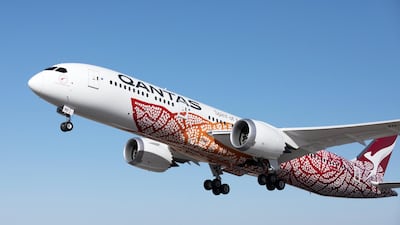When Orville and Wilbur Wright first took to the skies in 1903, they described the desire to fly as “handed down to us by our ancestors”, who “looked enviously on the birds soaring freely through”. Back then, they managed the seemingly impossible by taking off for a total of 12 seconds and travelling 120 feet, at a height of 10ft off the ground. Their groundbreaking exploits were largely ignored by sceptical newspaper editors, who dismissed them as fantasists.
More than a century on and the feat of air travel still has the power to create wonder and incredulity. Qantas Airways has just launched the longest non-stop flight from the UK, a marathon 17-hour, 20-minute direct route from London to Perth. Clocking in at 14,498km, this time there was no chance of editors and reporters missing the main event. Most were safely ensconced in business class for the world's second-longest flight, just shy of the longest flight covering 14,529km. Qantas chief executive Alan Joyce called the first direct link between Australia and Europe "a historic day for aviation", with some of the fervour of those to witness it reminiscent of the feverish excitement which once attended supersonic passenger jet Concorde before its retirement in 2003.
The development of more direct routes could be seen as a challenge to the UAE's status as a transit hub. The country has traditionally been a gateway for those transiting between East and West to break up long journeys, with passengers increasingly choosing to spend a few days there. Last year Dubai International Airport was the world's busiest for international traffic for the fourth consecutive year, with 88.2 million passengers passing through. This year that figure is expected to reach 90.3 million. With more of those travellers choosing to spend more time in Dubai and Abu Dhabi, the UAE is only more likely, not less, to become a destination in its own right. In these globalist times, when the "kangaroo route" to the other side of the world has been shortened from Qantas' original four-day journey with seven stops to less than a day, the only quandary is likely to be how much entertainment to take on board to stave off boredom.

